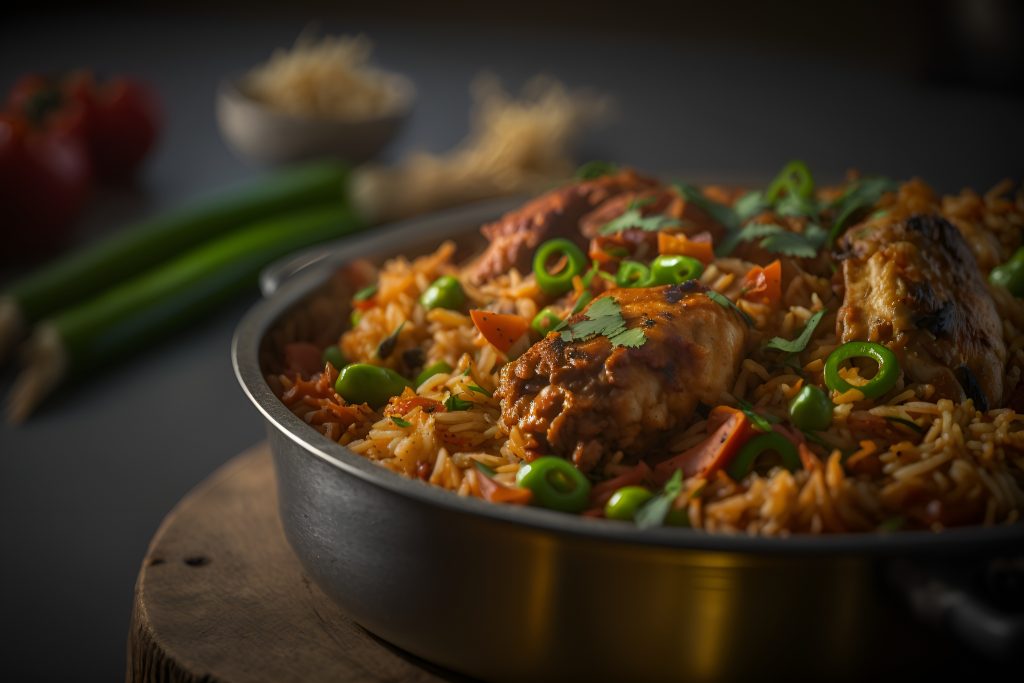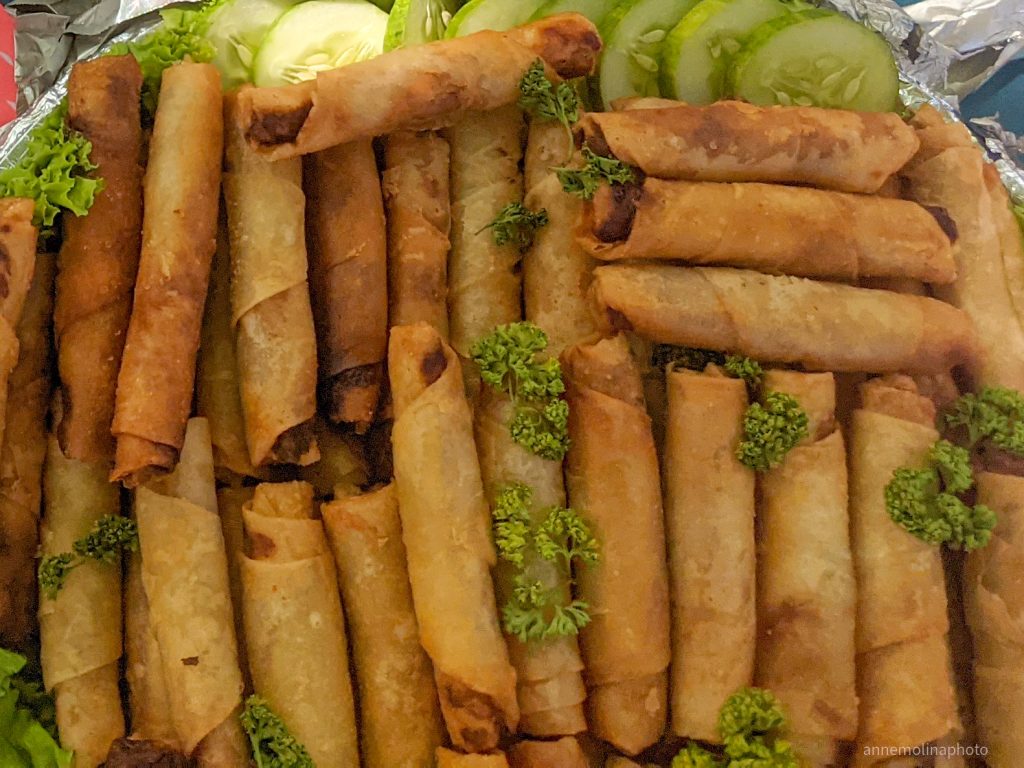Discovery & Entrepreneurship’s Fresh Family Recipes
In each issue of Madeworthy, we feature recipes from local restaurants and food people. For our Discovery & Entrepreneurship issue, we reached out to two restauranteurs who started out in food trucks, built a following, and opened successful brick-and-mortar locations.

Cajun-Style Jambalaya
There are few things that are more comforting on a winter’s night than a bowl of jambalaya. This recipe, from Trey Smith, owner/chef of The Dusty Biscuit, will warm your heart. Smith started making beignets, the iconic deep-fried pastry of New Orleans, as a side hustle while teaching school. After taking a leap of faith into a food truck in 2020, Smith now has a brick-and-mortar on South Main Street, as well as a beignet stand at Amon Carter Stadium.

Chef’s Notes
- This recipe is for a Cajun-style, brown jambalaya. If you prefer Creole-style, red jambalaya, you can add a can of diced tomatoes (drained) and a tablespoon of tomato paste.
- Much like the roux to a gumbo, jambalaya gets its flavor from its “gratin” or “fond,” the term for the brown, flavorful bits that collect in the bottom of the pan. Cajun food is wonderful because it practically begs you to burn things.
- This recipe is designed for pork (butt, shoulder, chops, etc.), chicken (preferably boneless, skinless thighs), and sliced sausage. You can mix and match, and add seafood, if you like.
- Use chicken stock for the standard recipe or seafood stock if adding shrimp.
Ingredients
4 pounds of meat (chicken, sausage, pork – see Chef’s Note #3 above)
1 tablespoon neutral-flavored oil
4 cups of long-grain rice
8 cups water or chicken stock (see Chef’s Note #4 above)
1 ½ teaspoons kosher salt
1 ½ cups onions, chopped
1 bell pepper, chopped, approximately 1 cup
1 ½ ribs of celery, chopped, approximately ¾ cup
4 teaspoons garlic powder, or 3 to 4 cloves, minced
6 green onions, sliced
1 tablespoon parsley, minced
2 tablespoons Worcestershire sauce
2 tablespoons Louisiana-style hot sauce (Smith prefers Crystal brand)
2 teaspoons Cajun Seasoning (Editor’s note: I prefer Tony Chachere’s Original)
1/2 teaspoon cayenne pepper
1/2 teaspoon black pepper
1/2 teaspoon white pepper
1 tablespoon Kitchen Bouquet (optional)
Note
Before you begin, chop all your vegetables, cut meat into bite slice pieces or slices, and prepare your stock. Measure out rice and have your seasonings ready.
Directions
in a large Dutch oven (6 quart or larger), heat the oil over medium high heat. Season the pork well with salt and pepper and/or Cajun seasoning. Add it to the pot to brown. Let the meat get a good sear, and even let it stick a bit. This will build up the “gratin” or “fond” needed to flavor and color the jambalaya. Once brown, add in the chicken and begin to brown as well. Cook out as much liquid as possible. Add in sliced sausage and stir to combine (but do not over-brown the sausage).
Add in the onions, bell pepper, celery, and garlic and cook until soft. Use a spatula or spoon to scrape the bottom of the pan and release the browned bits from the bottom. Once cooked, add in the stock and all other remaining ingredients and seasonings. Taste the liquid and adjust seasoning as needed. Remember, you want the liquid to be a bit salty, as the rice will absorb all the flavorings. Skim any grease or fat off the top as it comes up to heat.
Turn up to high and bring to a rolling boil. Add the rice and stir from the bottom to keep it from sticking. Let the liquid come back to the boil, give the rice a final stir, and cut the heat to low. Put on a tight-fitting lid and wait 20 minutes. Don’t peek! After 20 minutes, gently “fold” the rice up to the surface, being careful to not scrape the bottom of the pot. Turn the heat off, put the lid on for 5 more minutes, and then uncover and serve. C’est bon, y’all!
Serves 8 to 12
Lumpia (Filipino-Style Egg Roll)
Ober Here is another food truck success story. Mark Guatelara was a hotel chef when a pandemic furlough got him thinking. He launched Ober Here in a food truck before moving to a brick-and-mortar location on Eighth Avenue. Guatelara marries the flavors of his homeland with the rice bowl craze, along with these delicious lumpia.

Ingredients
1 pound ground pork (can substitute ground chicken, beef, salmon, or plant-based meat substitute)
1 red onion, peeled and cut into quarters
1 large carrot, peeled and cut into chunks
1 red bell pepper, cut into chunks
2 tablespoons salt
1 tablespoon garlic powder
1 teaspoon black pepper
1 teaspoon paprika
1 pack lumpia/spring roll wrappers (preferred brands: Wei Chuan or Spring Home)
1 egg, lightly beaten with a teaspoon of water for an egg wash
Directions
Thaw lumpia/spring roll wrappers in the wrapper.
Using a food processor, process the red onion, carrot, and red bell pepper until smooth. In a large bowl, mix the pureed vegetables into the ground pork, along with the salt, garlic powder, black pepper, and paprika until everything is fully incorporated.
Open the pack of wrappers and lay one wrapper on a clean work surface. Spread 1 tablespoon of the pork mixture along the closest edge of the wrapper. Slowly and firmly, roll the meat up in the wrapper like a cigar, leaving the sides open. Use the egg wash to seal the lumpia. Place the completed lumpia on a baking sheet. Repeat until all the pork is used.
Once all the lumpia are rolled, freeze them for at least 4 hours. Cut each lumpia into your desired length before cooking. You can make a large batch of lumpia and keep them in the freezer in an airtight container for about 3 months, bringing out how much you want until it’s time to make another large batch.
To fry, heat enough oil (canola or peanut) to reach 2 inches in a large, heavy-bottomed pot to 325°. Fry the frozen lumpia in batches for 3 to 4 minutes, or until golden brown. Remove from the oil and set the cooked lumpia on a baking rack placed over a paper towel-lined baking sheet and allow to rest for a couple of minutes. Serve with your favorite dipping sauce*.
*Editor’s favorite, easy dipping sauce
While this isn’t authentically Filipino, it is a vinegary, soy-based sauce, two ingredients that figure prominently in the cuisine of the Philippines.
Ingredients
2 tablespoon soy sauce (can use low sodium or gluten free tamari)
2 tablespoon rice vinegar
½ teaspoon sugar
1 clove garlic, minced
1 teaspoon crushed red pepper flakes
Directions
Combine all ingredients in a bowl. Divide into small ramekins to serve. Makes enough sauce for 4.


 Sign in
Sign in

